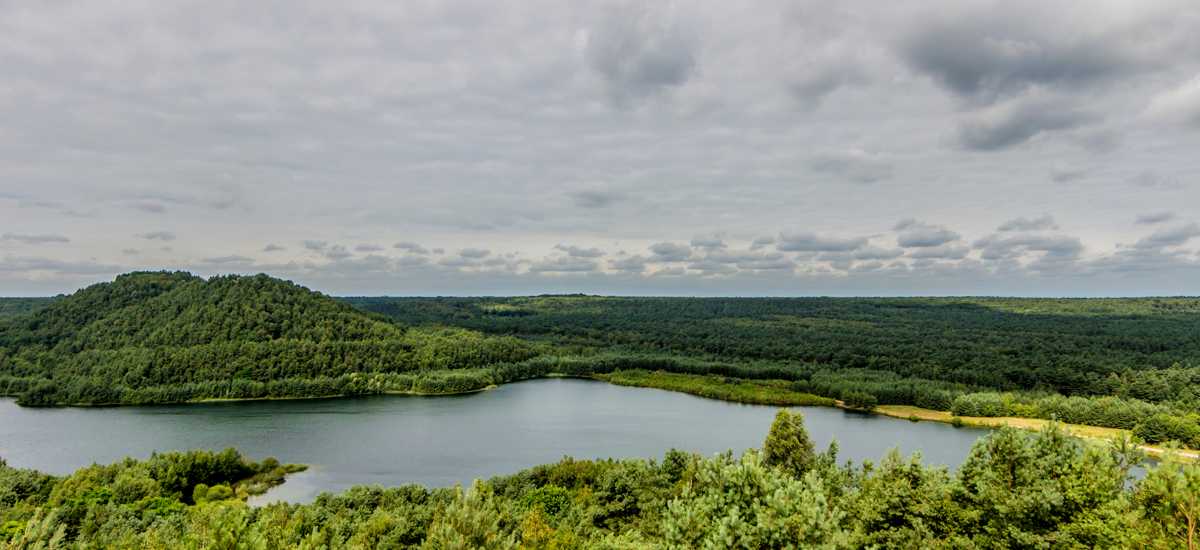A Belgian holiday resort seems an unlikely place for an energy revolution.
Terhills, located in a national park on the Dutch border, was once a coal mine.
Today, it is a tourist destination that also points towards the future of energy, as home to one of Europe’s largest virtual power plants – a digital control system connecting energy generators and storage systems that monitors the grid and makes ongoing adjustments to balance, supply and demand. Virtual power plants not only add stability to the grid, they make it more efficient and more sustainable – and they create profit opportunities for businesses.
The Terhills site hosts 140 lithium-ion batteries with a total energy capacity of 18 megawatts. The battery storage there is combined with the energy flexibility of factories and other major energy producers in Belgium to create a 32MW virtual power plant.
This represents an “always on” energy capacity the equivalent of 10 wind turbines, which can be made available to the grid at a speed 100 times faster than switching on a gas traditional plant.
Batteries Included
At the Terhills site, there are two main elements: energy storage and flexible energy demand.
The fastest-growing form of energy storage being developed today is industrial-scale batteries that are being used for innovative solutions. There are two main types:
- Rechargeable cell-based batteries - these comprise one or more electrochemical cells of varied shapes and sizes. Lithium-ion batteries are the most popular, found in everything from smartphones to electric vehicles to virtual power plants on Belgian holiday resorts.
- Flow batteries - a rechargeable battery that normally uses two liquid electrolytes stored in separate tanks. The liquid in one tank is positively charged and in the other negatively charged. These two liquids are pumped into the battery when required.
One of Europe’s largest battery storage projects is Centrica Business Solution’s 49MW Roosecote battery in Barrow, Cumbria.
The Roosecote battery is made from more than 100,000 lithium-ion battery cells. The energy from these is enough to power 50,000 homes, and can be made available to the grid in half a second.
On-site battery storage offers businesses security of supply and the potential to decarbonise their energy use.
These benefits go hand-in-hand with the move to onsite energy generation, something that, according to a poll by Centrica Business Solutions in 2019, the majority of businesses are considering. The survey of businesses in North America and Europe found that two-thirds of businesses are generating more than 10% of their energy on-site already, with 80% anticipating they will increase use of on-site generation over the next 5 years.
Another key benefit of battery storage for businesses is the ability to generate additional revenues, by feeding electricity back into the grid or by reducing their demand at peak times and using energy from the grid when it is cheapest. This also provides the opportunity to participate in the flexibility and demand-response markets run by European and North American operators.
Virtual Power on Demand
While battery storage offers valuable extra capacity to grid operators struggling to balance supply with demand, it comes into its own when businesses also have the ability to flex their demand. It is at this point that the energy they are offering can start to be considered “virtual”.
Flexibility and demand-response markets are well established on both sides of the Atlantic.
However, in the past flexible energy supply has meant starting up a diesel generator, while demand-response markets – where major energy users cut their use at peak times – were planned far in advance.
Today, batteries can provide flexible supply in a fraction of the time it takes to start up a generator. Similarly, technologies such as the Internet of Things and Artificial Intelligence are combining to make demand response calls by grid operators something that can now happen in seconds, without impacting significantly on business operations
Software such as Centrica Business Solutions’ Flexpond connects to thousands of IoT sensors in factories and commercial buildings, and can adjust their demand within seconds.
It has built-in AI that learns how and when machines use energy, and can then target the most appropriate machines for energy reduction during a demand response call by the grid.
The near-instantaneous response of such systems provides virtual energy capacity for grid operators, and it is proving popular with major users.
The demand response market is growing rapidly in North America, the UK and Europe. In North America alone, the market is estimated to more than double in value to $18 billion in 2022 from $8 billion in 2018.
More than half of that will come from industrial users. The next largest element will come from residential premises, as smart homes and smart metering technologies combine with AI to finetune domestic consumers’ energy use in real time.
Transforming Energy
From the latest lithium-ion batteries to AI-controlled energy use, the growth of virtual power plants is indicative of how technology is transforming energy today.
Firstly, technology is helping decarbonise energy. Battery storage is helping make renewables a more reliable source for both grid operators and businesses. Smarter energy sensing through everything from smart meters to AI-enabled IoT devices also means we can all understand and control our use more efficiently.
Secondly, technology is helping to decentralise energy. Fifty years ago, the energy map of most industrialised nations was that of a handful of centralised, large-scale power plants pushing energy out across the grid.
In just a few years’ time, that energy map will have completely transformed to an intricate network of thousands of small generators – real and virtual – and storage facilities all moving energy within their local areas. The solar panels on the roofs of homes and offices, the batteries in factories and holiday resorts will all play a key role in the future of energy.
